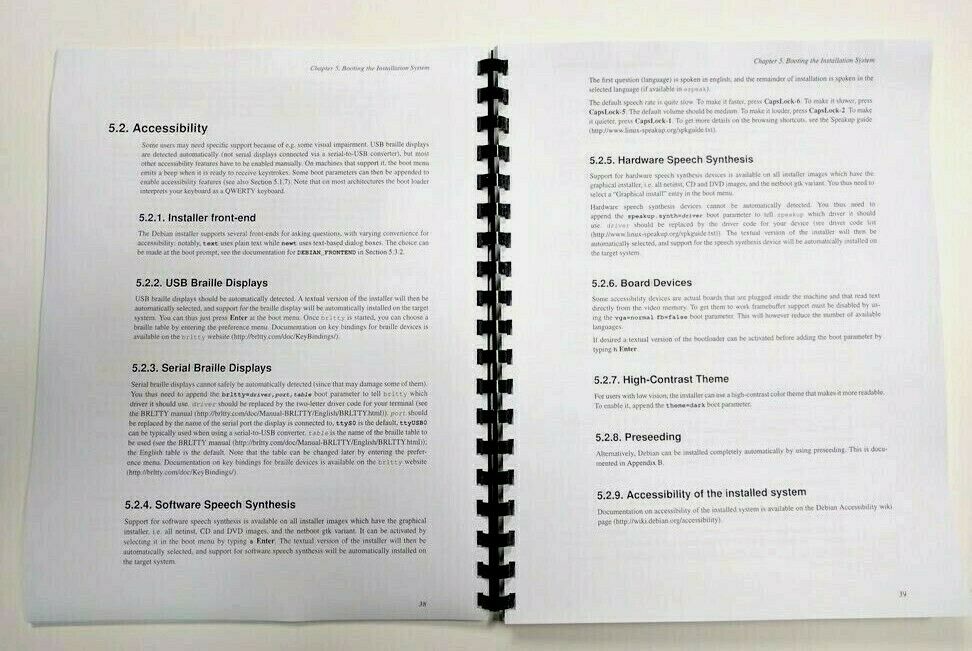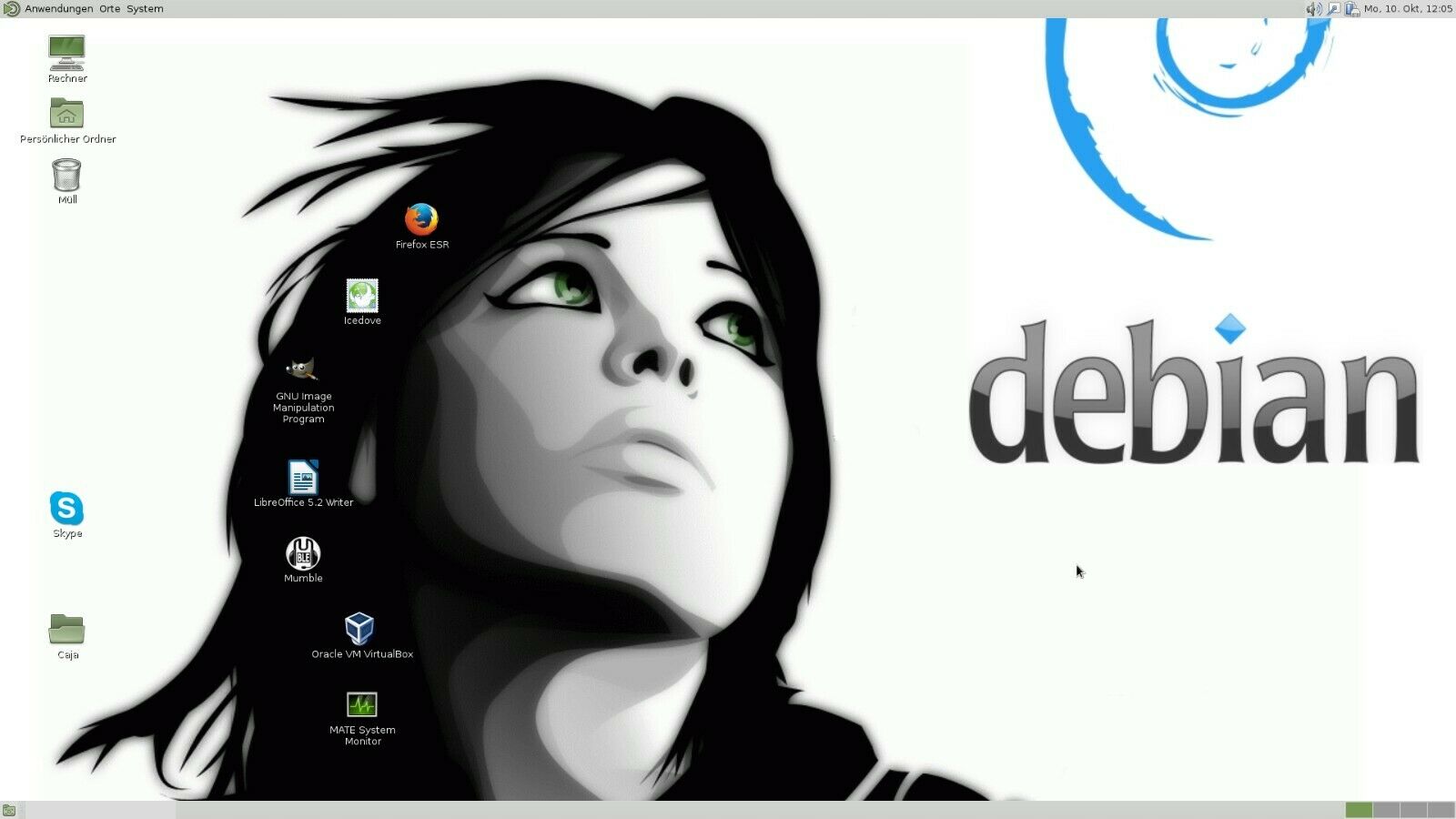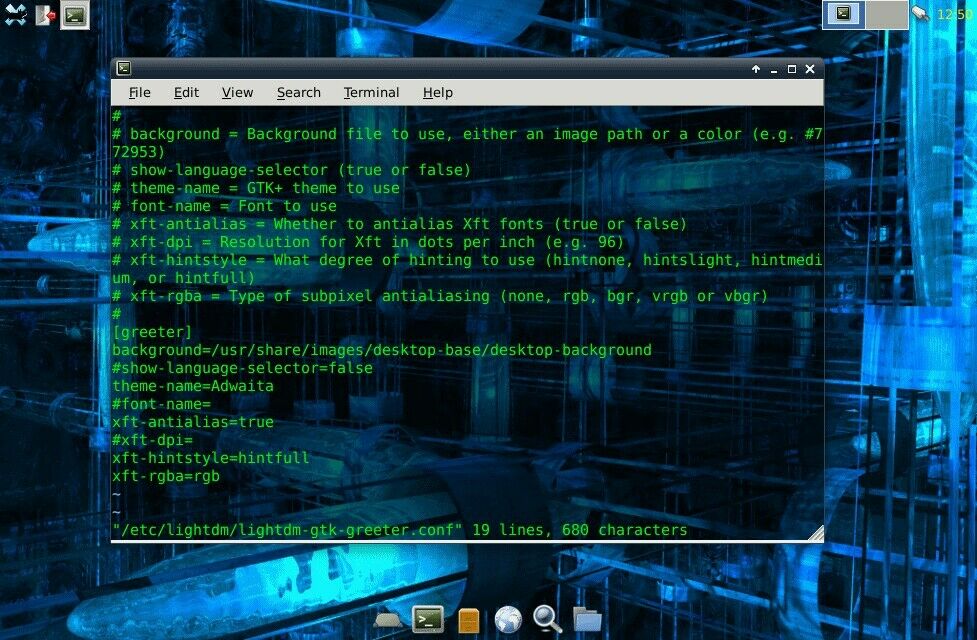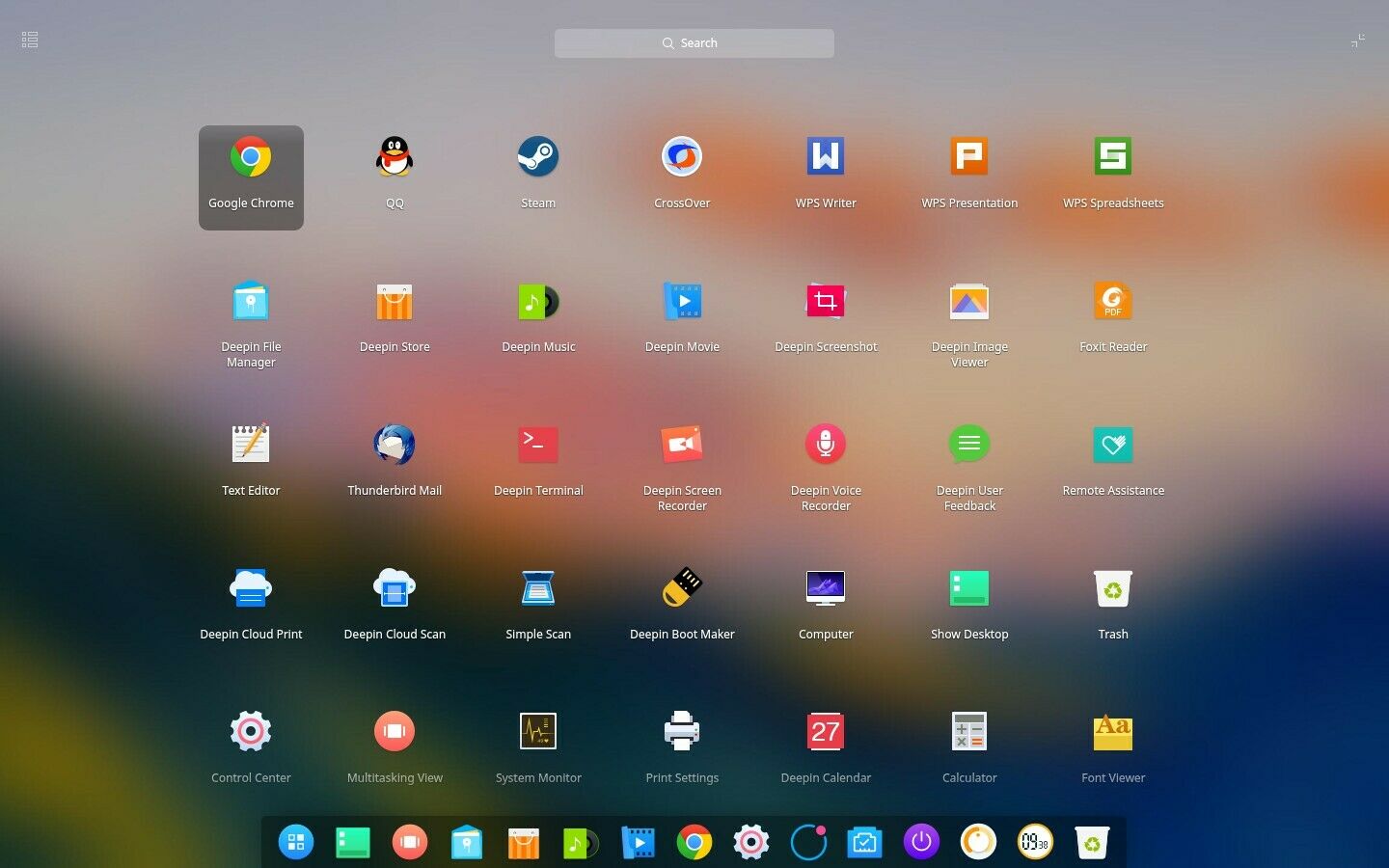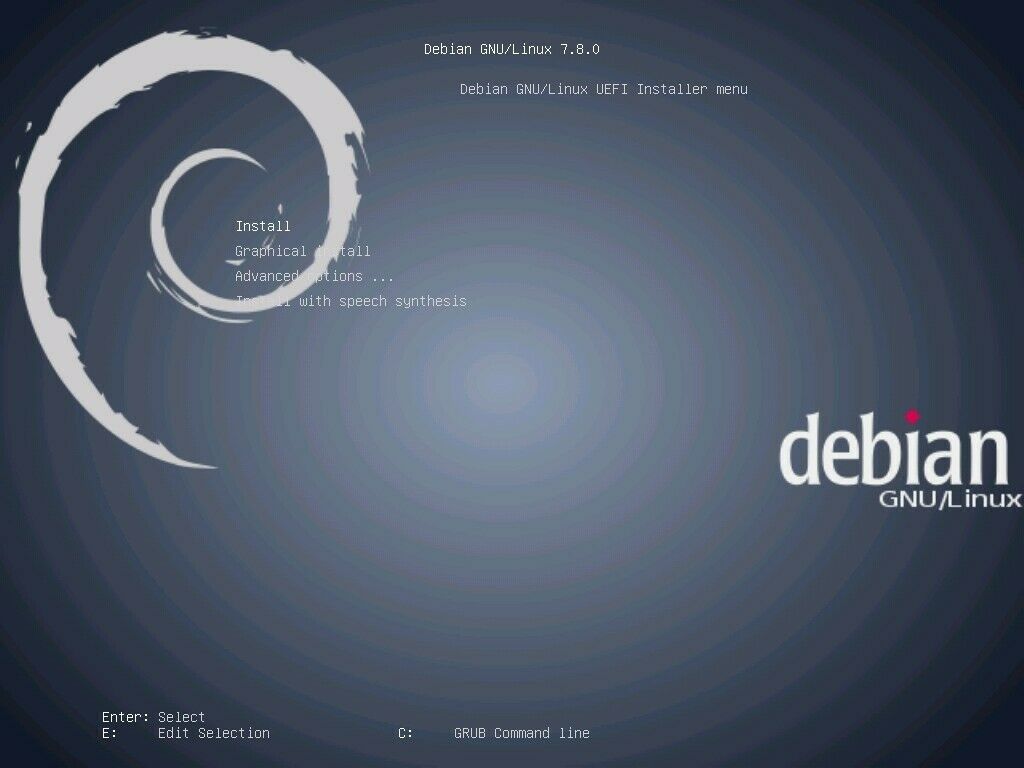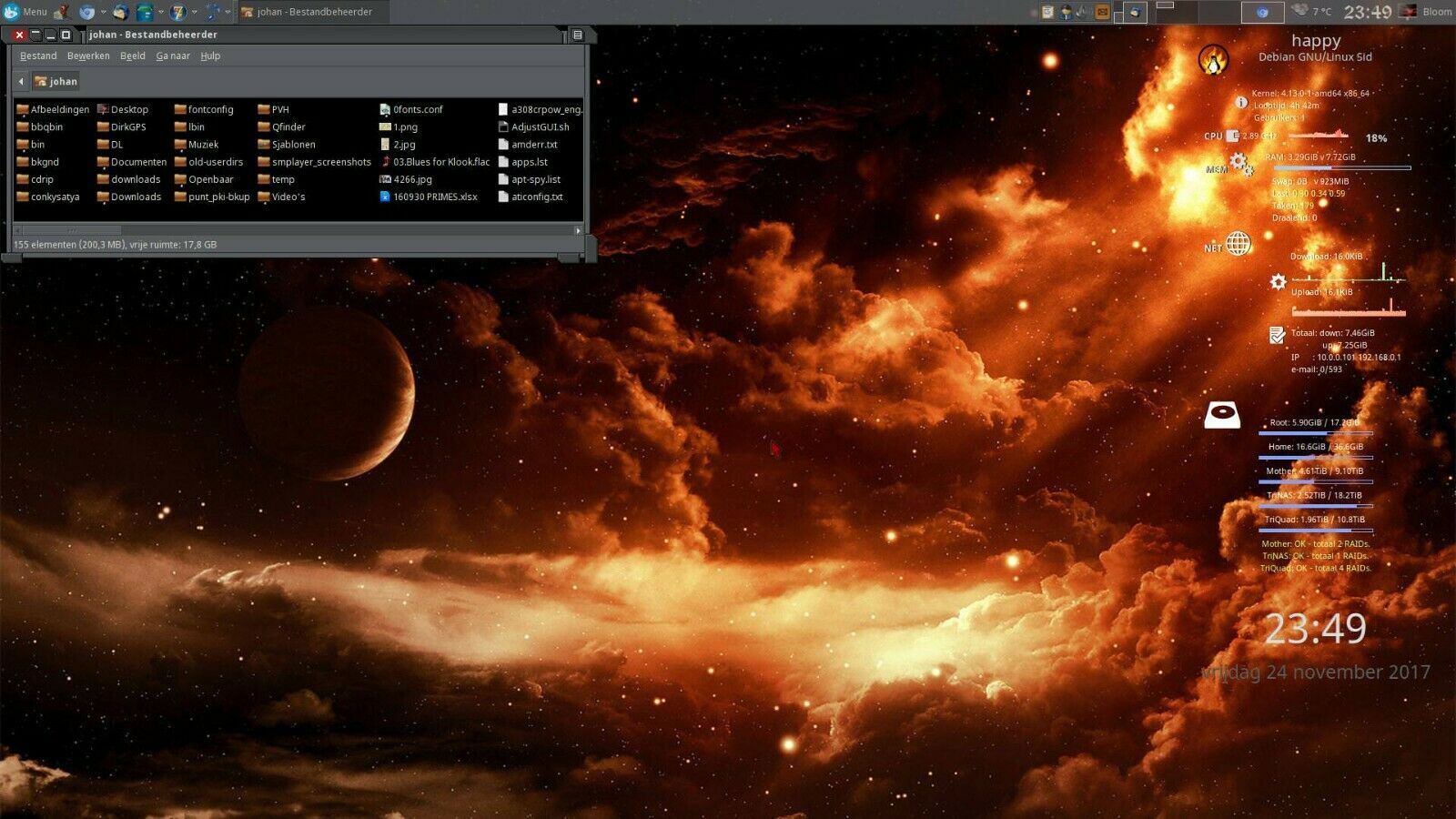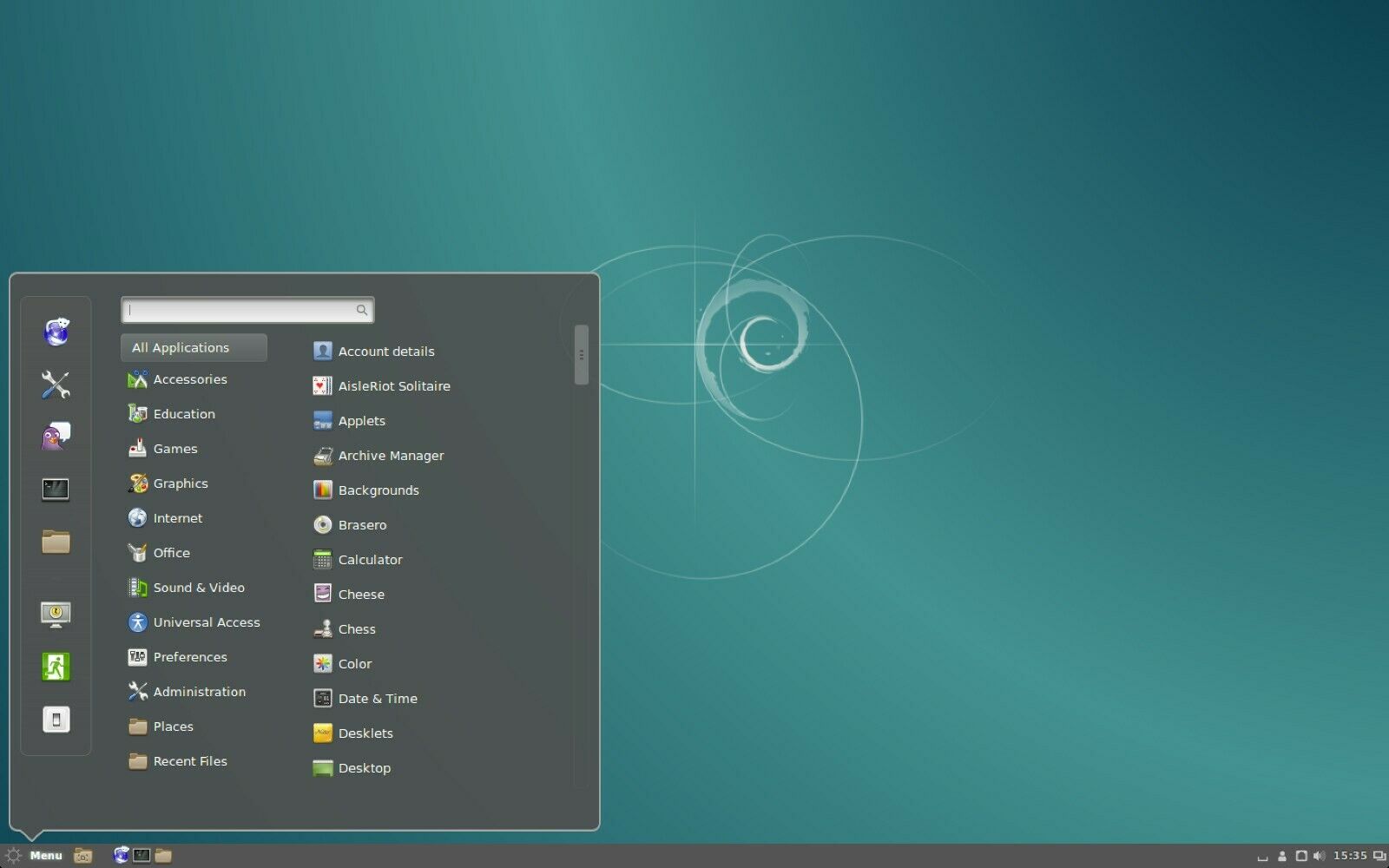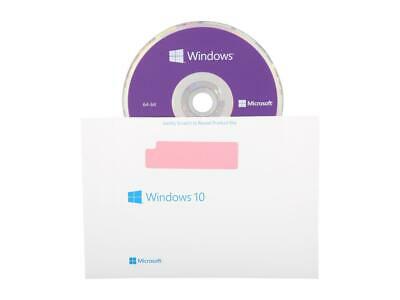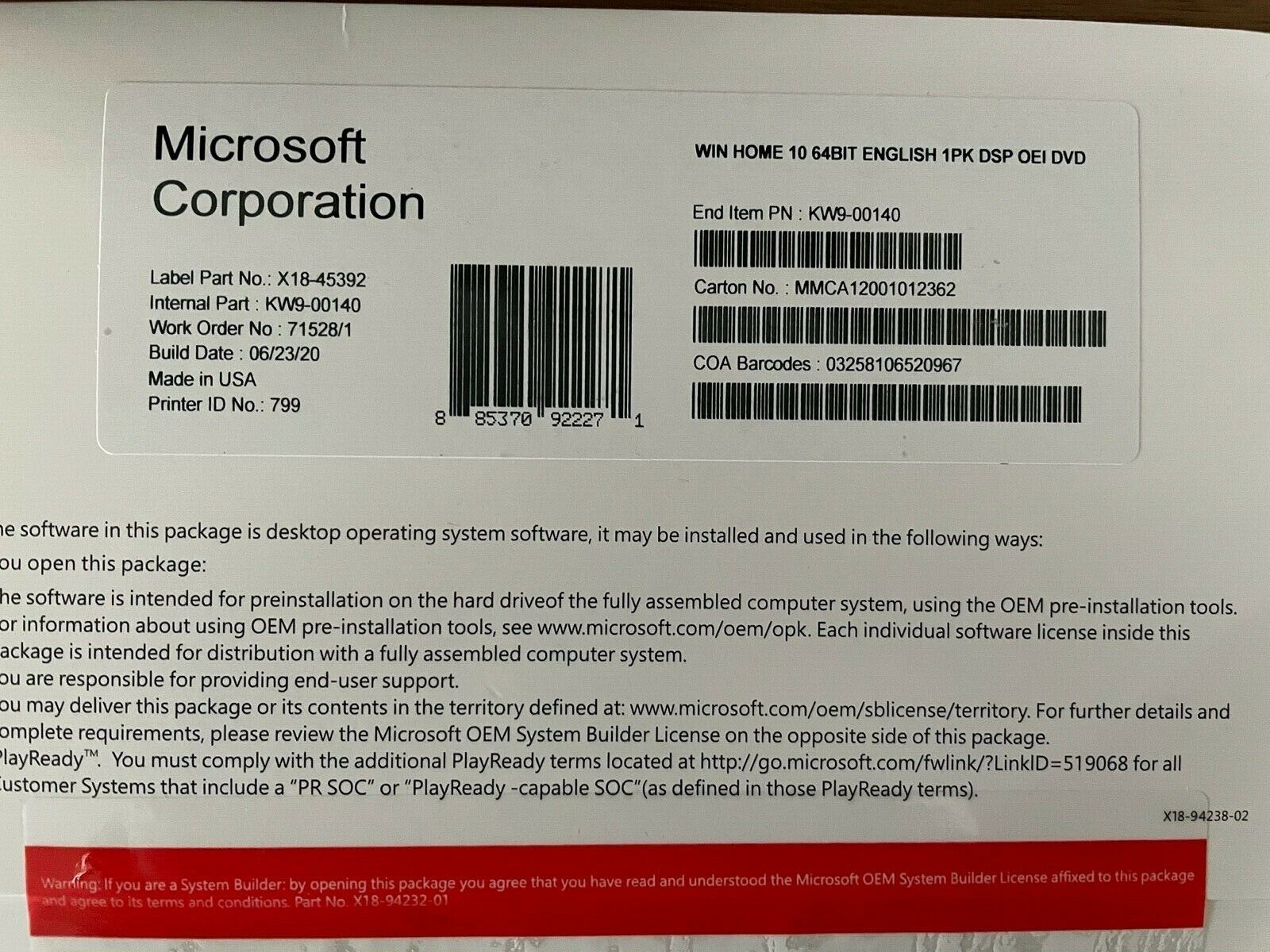-40%
Debian 10 - OFFICIAL INSTALL MANUAL and USER GUIDE 2021
$ 8.42
- Description
- Size Guide
Description
Debian 10 - OFFICIAL INSTALL MANUAL and USER GUIDE 2021Description
Printed Debian install manuals. 117 Pages. Comb bound. The Debian Project is an association of individuals who have made common cause to create a free operating system.
This operating system that we have created is called Debian. An operating system is the set of basic programs and utilities that make your computer run. At the core of an operating system is the kernel. The kernel is the most fundamental program on the computer and does all the basic housekeeping and lets you start other programs. Debian systems currently use the Linux kernel or the FreeBSD kernel.
Linux is a piece of software started by Linus Torvalds and supported by thousands of programmers worldwide. FreeBSD is an operating system including a kernel and other software.
64 Bit Processor Edition
About Debian 10
After 25 months of development the Debian project is proud to present its new stable version 10 (code name buster), which will be supported for the next 5 years thanks to the combined work of the Debian Security team and of the Debian Long Term Support team.
Debian 10 buster ships with several desktop applications and environments. Amongst others it now includes the desktop environments:
Cinnamon 3.8,
GNOME 3.30,
KDE Plasma 5.14,
LXDE 0.99.2,
LXQt 0.14,
MATE 1.20,
Xfce 4.12.
In this release, GNOME defaults to using the Wayland display server instead of Xorg. Wayland has a simpler and more modern design, which has advantages for security. However, the Xorg display server is still installed by default and the default display manager allows users to choose Xorg as the display server for their next session.
Thanks to the Reproducible Builds project, over 91% of the source packages included in Debian 10 will build bit-for-bit identical binary packages. This is an important verification feature which protects users against malicious attempts to tamper with compilers and build networks. Future Debian releases will include tools and metadata so that end-users can validate the provenance of packages within the archive.
For those in security-sensitive environments AppArmor, a mandatory access control framework for restricting programs' capabilities, is installed and enabled by default. Furthermore, all methods provided by APT (except cdrom, gpgv, and rsh) can optionally make use of seccomp-BPF sandboxing. The https method for APT is included in the apt package and does not need to be installed separately.
Network filtering is based on the nftables framework by default in Debian 10 buster. Starting with iptables v1.8.2 the binary package includes iptables-nft and iptables-legacy, two variants of the iptables command line interface. The nftables-based variant uses the nf_tables Linux kernel subsystem. The alternatives system can be used to choose between the variants.
The UEFI (Unified Extensible Firmware Interface) support first introduced in Debian 7 (code name wheezy) continues to be greatly improved in Debian 10 buster. Secure Boot support is included in this release for amd64, i386 and arm64 architectures and should work out of the box on most Secure Boot-enabled machines. This means users should no longer need to disable Secure Boot support in the firmware configuration.
The cups and cups-filters packages are installed by default in Debian 10 buster, giving users everything that is needed to take advantage of driverless printing. Network print queues and IPP printers will be automatically set up and managed by cups-browsed and the use of non-free vendor printing drivers and plugins can be dispensed with.
Debian 10 buster includes numerous updated software packages (over 62% of all packages in the previous release), such as:
Apache 2.4.38
BIND DNS Server 9.11
Chromium 73.0
Emacs 26.1
Firefox 60.7 (in the firefox-esr package)
GIMP 2.10.8
GNU Compiler Collection 7.4 and 8.3
GnuPG 2.2
Golang 1.11
Inkscape 0.92.4
LibreOffice 6.1
Linux 4.19 series
MariaDB 10.3
OpenJDK 11
Perl 5.28
PHP 7.3
PostgreSQL 11
Python 3 3.7.2
Ruby 2.5.1
Rustc 1.34
Samba 4.9
systemd 241
Thunderbird 60.7.2
Vim 8.1
more than 59,000 other ready-to-use software packages, built from nearly 29,000 source packages.
WHAT is Debian?
The Debian Project is an association of individuals who have made common cause to create a free operating system. This operating system that we have created is called
Debian
.
An operating system is the set of basic programs and utilities that make your computer run. At the core of an operating system is the kernel. The kernel is the most fundamental program on the computer and does all the basic housekeeping and lets you start other programs.
Debian systems currently use the Linux kernel or the FreeBSD kernel. Linux is a piece of software started by Linus Torvalds and supported by thousands of programmers worldwide. FreeBSD is an operating system including a kernel and other software.
A large part of the basic tools that fill out the operating system come from the GNU project; hence the names: GNU/Linux, GNU/kFreeBSD, and GNU/Hurd. These tools are also free.
Of course, the thing that people want is application software: programs to help them get what they want to do done, from editing documents to running a business to playing games to writing more software. Debian comes with over 43000 packages (precompiled software that is bundled up in a nice format for easy installation on your machine), a package manager (APT), and other utilities that make it possible to manage thousands of packages on thousands of computers as easily as installing a single application. All of it free.
It's a bit like a tower. At the base is the kernel. On top of that are all the basic tools. Next is all the software that you run on the computer. At the top of the tower is Debian — carefully organizing and fitting everything so it all works together.
What hardware is supported?
Debian will run on almost all personal computers, including most older models. Each new release of Debian generally supports a larger number of computer architectures.
There are a few companies that make support difficult by not releasing specifications for their hardware. This means you might not be able to use their hardware with GNU/Linux. Some companies provide non-free drivers, but that is a problem because the company could later go out of business or stop support for the hardware you have. We recommend that you only purchase hardware from manufacturers that provide free drivers for their products.
I'm still not convinced.
Don't take our word for it - try Debian yourself. Since hard disk space has become less expensive, you can probably spare about 2GB. If you don't want or need a graphical desktop, 600MB are sufficient. Debian can be easily installed on this extra space and can coexist with your existing OS. If you eventually need more space, you can simply delete one of your OSes (and after you see the power of a Debian system, we are confident you won't delete Debian).
Careful care and consideration is taken in sourcing the world's leading GNU brands from around the globe to be made available all in one space. All products sourced are retail quality in order to uphold the integrity of the brands they represent and we take pride in the portion of proceeds that go to the support of developers for future updates and innovation.
